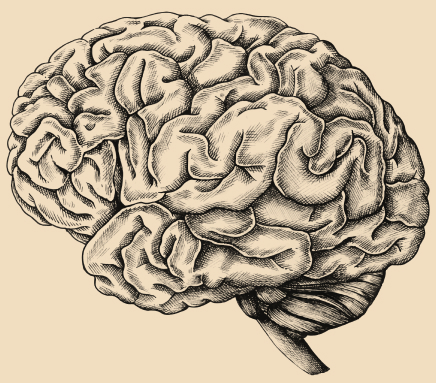
Clinical
Hypnotherapy offers a powerful path to personal growth, healing, and positive change, unlocking the potential within for lasting transformation.
Hypnotherapy combines the remarkable benefits of mind-body connection with scientific evidence. Supported by neuroscience and psychology, it offers an effective approach to overcoming challenges, reducing stress, promoting personal growth and more. By tapping into the power of the subconscious mind, hypnotherapy can facilitate lasting positive change.
Are you ready to unlock your potential and embark on a transformative journey?


Hypnotherapy works by utilizing the power of focused relaxation. In this relaxed state, known as hypnosis, your subconscious mind becomes more open to positive suggestions and new ways of thinking. It’s like accessing the control panel of your mind, where we can address and change unhelpful beliefs or habits. Rewiring them to help you overcome challenges and achieve your goals. By tapping into the power of your own mind, hypnotherapy helps you make lasting changes and unlock your potential for personal growth..
Learning and Association
As we learn, our mind forms positive or negative associations between experiences and our thoughts and feelings. For instance, the smell of cookies baking may trigger memories of mom, or the anticipation of a tasty treat, leading to the feeling of nostalgia or the sensation of hunger.
Primitive Mind & Reflexes
At birth, our primitive mind, governed by the sympathetic nervous system, creates instinctive survival responses like fight or flight. Reflexes such as fear of falling or reacting to loud noises are present. The parasympathetic nervous system later restores balance and homeostasis.
Subconscious Script
Our experiences shape our subconscious, accounting for 88% of our thinking. These associations, formed without a critical filter, become our knowns or life script. Whether positive or negative associations can trigger automatic responses, influencing behavior.
Critical Filter
It develops around age 8, allowing us to analyze experiences logically. The conscious mind (representing the 12%) gains functions like decision making and reasoning. Potential conflicts arise when subconscious associations clash with conscious intentions.
Overload
Hypnosis occurs when our mind gets overloaded with information, temporarily disrupting our logical thinking. This hyper-suggestible state gives access to our subconscious mind, and in hypnotherapy, it’s created by building upon existing anxiety using words as tools.
Positive suggestions are statements or affirmations delivered by the hypnotherapist during the hypnotic state. These suggestions are designed to promote desired behaviors, thoughts, or attitudes. By repeating and reinforcing positive suggestions, the therapist helps the client reprogram their subconscious mind and adopt more beneficial beliefs and patterns of thinking.
This technique involves systematically tensing and relaxing different muscle groups in the body to induce physical relaxation. The therapist guides the client through the process, helping them achieve a deep state of relaxation and reduce overall tension and stress.
Imagery uses the power of imagination and visualization to create positive mental images. The therapist guides the client to imagine specific scenes or scenarios that promote relaxation, healing, or desired outcomes. This technique can be used for various purposes, such as managing anxiety, improving self-confidence, or overcoming fears.
Anchoring involves associating a specific physical or mental stimulus with a desired emotional state. The therapist helps the client establish a connection between the stimulus and the desired emotional response through repetition and reinforcement. This technique can be used to access positive emotions and create a resourceful state in challenging situations.
Parts therapy, also known as ego-state therapy, involves communicating with different aspects or “parts” of the client’s personality. The therapist facilitates a dialogue between conflicting parts to explore their perspectives, resolve inner conflicts, and foster integration and harmony within the individual.
Metaphors are symbolic stories or narratives used in hypnotherapy to communicate ideas, concepts, or suggestions indirectly. The therapist presents metaphors that resonate with the client’s experiences, facilitating insight, reframing perspectives, and promoting positive change at a subconscious level.
These techniques are some of the most commonly utilized in hypnotherapy, but it’s important to note that the specific techniques employed may vary depending on the client’s unique needs and the therapeutic approach of the hypnotherapist.

Hypnotherapy has a rich history that spans ancient civilizations to modern times. Ancient cultures like the Egyptians and Greeks used trance-like states for healing. In the 18th century, Franz Mesmer developed animal magnetism, and James Braid coined the term “hypnosis” in the 19th century. Sigmund Freud initially used hypnosis but later shifted his focus. In the 20th century, hypnotherapy gained recognition, with Milton H. Erickson making significant contributions. Today, hypnotherapy is widely practiced and applied to various issues such as smoking cessation, weight management, anxiety reduction, and performance enhancement. It continues to evolve through ongoing research and the development of new techniques, offering a valuable approach to therapy.

How Can
Hypnotherapy
help you
Anger
Anxiety
Assertiveness
Career Success
Change Habits
Confidence
Creativity
Cravings
Exercise
Fear of Failure
Fear of Success
Fears
Forgiveness
Guilt
Insomnia
Irritability
Lack of Direction
Motivation
Nail Biting
Overeating
Pain Management
Past Life Regression
Perfectionism
Phobias
Problem Solving
Procrastination
Public Speaking
Relaxation
Self-Control
Self-Hypnosis
Sleep Disorders
Tardiness
Our consultations are online

Colombia
Brazil
Argentina
Mexico
United States
Canada
Alaska
Spain
France
Sweden
Finland
Niger
Africa
Italy
Georgia
Russia
China
India
Saudi Arabia
Philippines
Australia
New Zealand